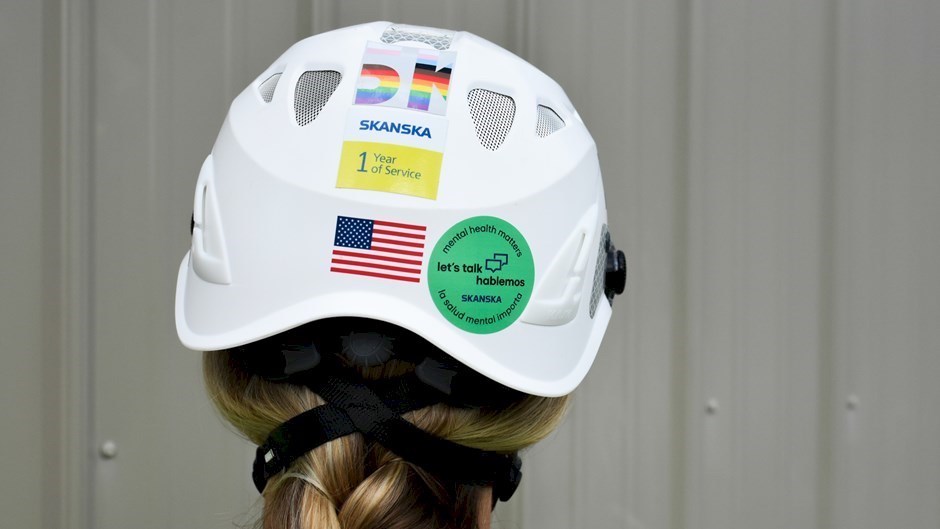In its second annual “Gilbane Cares Report—Our Blueprint for impact,” released on May 30, Gilbane Building Company notes that the firm had set a goal in the previous year to integrate mental health into its “Gilbane Care Culture” by taking a holistic approach to safety and wellbeing that focuses on its employees’ physical and mental states.
As a result of that commitment, Gilbane rolled out its mental health First Aid program, and has trained more than 200 employees to identify symptoms of someone in crisis, and how to assist that person. The firm is working closely with Dr. Sally Spenser-Thomas, a mental health expert, to develop programs for employees and, in some cases, its trade partners. Gilbane has also formed a 10-person LifeSavers Group, whose contact information is available on the firm’s intranet site. The LifeSavers’ purpose is mental health awareness and eliminating the stigma around it.
Many of the construction industry’s leading AEC firms now include mental health as part of their safety and wellness regimens. Employee Assistance Programs (EAPs) are, with greater frequently, part of these firms’ benefits packages, and encourage employees to come forward when they are in mental distress.
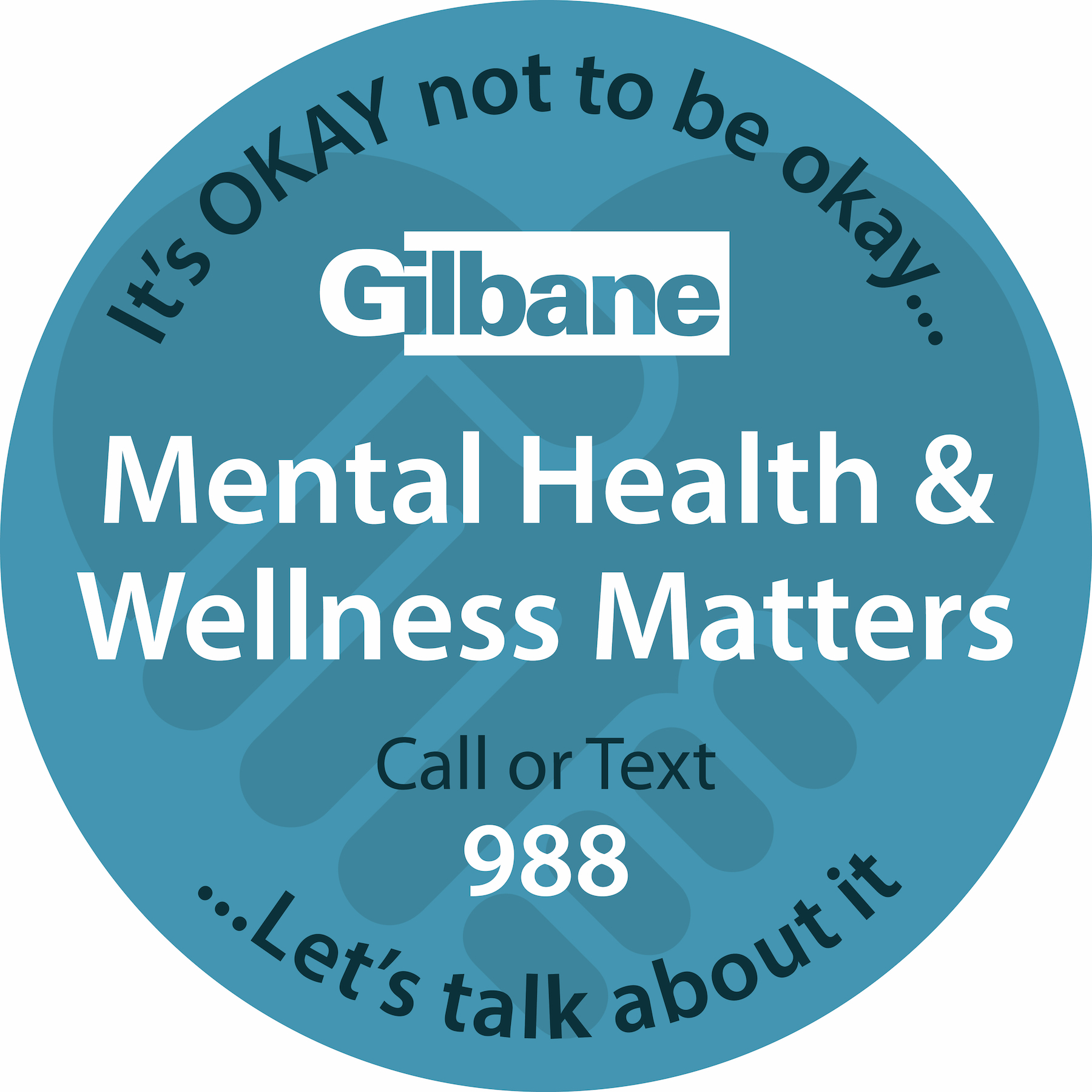
Gilbane
Such programs are more common at a time when the suicide rate for construction workers is the second-highest among all business sectors, according to estimates by the Centers for Disease Control and Prevention. A March 2021 survey of construction businesses across all job functions—conducted by American Psychiatric Foundation, Center for Workplace Mental Health, the Construction Financial Management Association, and Holmes Murphy—found that 69 percent of 1,175 respondent firms offered mental health training to their supervisors. However, shame, stigma, and fear of peer judgment are still the main reasons why workers in crisis don’t seek help.
“Employee Assistance Programs are not enough,” said Tom Everett, Senior Vice President with the AE firm Reynolds, Smith & Hills. During a recent panel discussion, Everett asserted that top-down leadership and support, specialized training, and opportunities for sharing stories are equally essential to any mental health program.
During that panel discussion, Selma Santin, communications director for the commercial and industrial contractor Kiewit Corporation, presented a chronology of her firm’s mental health efforts since November 2021, when Kiewit rolled out its “Under the Hat” program to simplify EAP access for its workers. During the first two weeks after the website for that program went live, it had 7,100 unique visitors, and has since averaged 4,000 visits per month.
The following May, Kiewit introduced its Mental Health e-learning program, followed by its Wellbeing Champion model, and other awareness and training efforts. The company, said Santin, also did a “deep dive” into the EAP market, and will switch its benefits provider this August to Lyra Health, which has its own therapists. Kiewit’s focus in 2023 is on mental health awareness resilience and communication, said Santin.
Making someone to talk with more visible
In 2020, Skanska USA Building brought its “Start the Conversation” mental health awareness program—which first took shape in the United Kingdom four years earlier—to Ohio, and one year later expanded it to Tennessee, where Skanska USA Building also launched its Green Sticker program in Nashville, which encourages employees across the industry to seek help from trained colleagues and professionals. In partnership with Amphibious Medics, Skanska USA Building, through May 2023, had provided Mental Health First Aid training to 179 of its employees in Ohio, Tennessee, Florida, North Carolina, and Texas, says Chris Hopper, the firm’s Executive Vice President and General Manager. Skanska’s goal is to expand this program to all offices, says Tony Foster, Environmental Health Services Director.
Foster explains that the First Aid training is a 12-hour course offered through the National Council of Mental Wellbeing. Paramedics who conduct the training at jobsites follow an action plan known by its acronym ALGEE: Approach, Listen, Give reassurance and information, Encourage self-help and other support strategies, and Encourage appropriate professional help.
Employees can also access first aid through CareBridge, a hotline for one-on-one counseling.
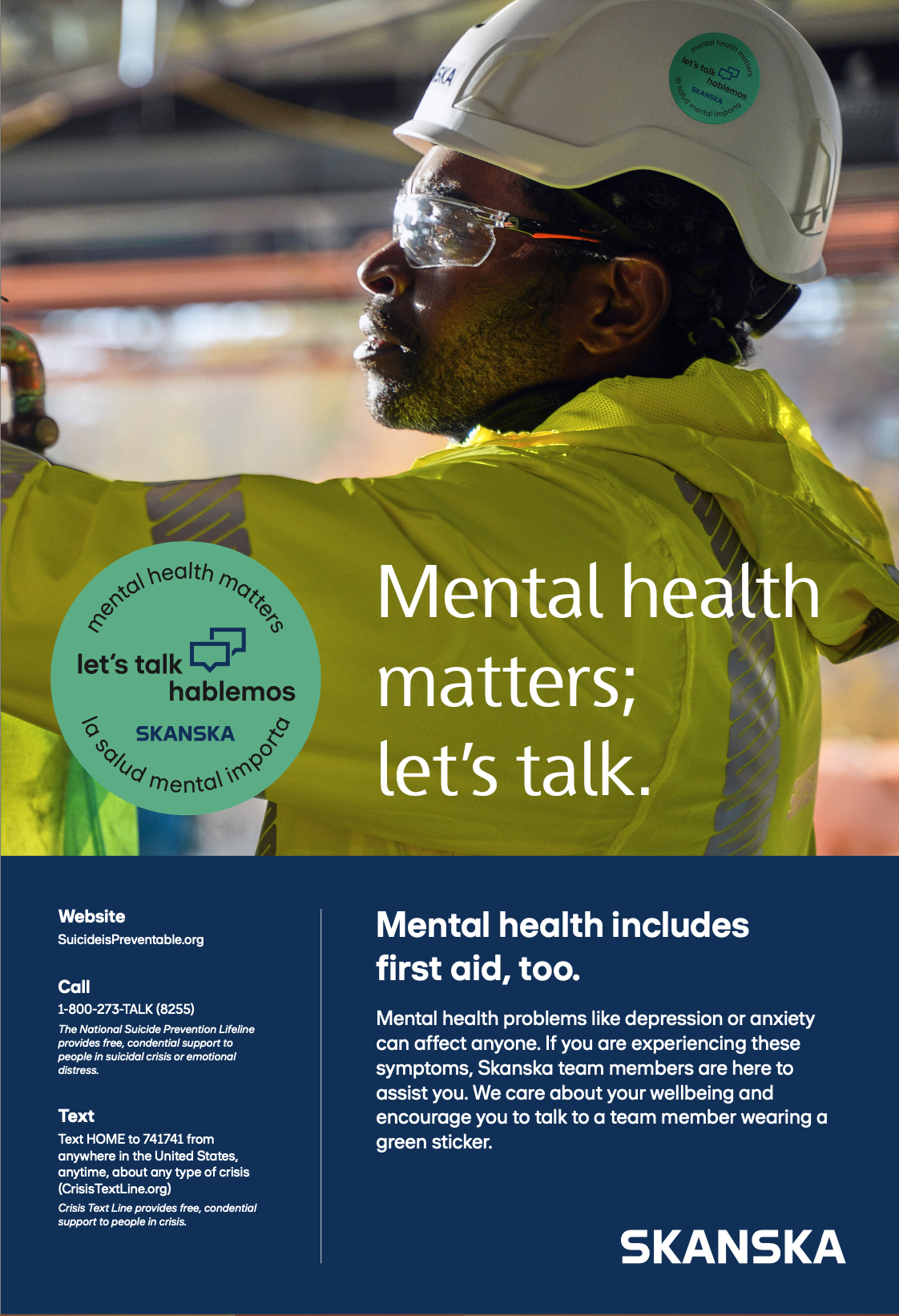
Using personal data, cautiously
At present, Skanska isn’t collecting data from these programs, so its metrics for success are anecdotal. Given the stigma attached to mental disorders in general, gathering and publishing the results of awareness and counseling programs are inherently tricky because of the implied confidentiality of this personal information.
“Employees don’t want to feel like they’re being tracked,” says Barbara Molloy, Vice President of Compensation and Benefits for Turner Construction, whom BD+C interviewed with Cindy DePrater, the firm’s Senior Vice President and Chief Environmental Health & Safety Officer. Still, Turner uses internal analytics to assess its mental health efforts, and earlier this year conducted a three-week online survey of its employees. The poll’s most important question, says DePrater, was “how are you doing?”
Turner has 12,000 employees, and on any given day its 1,500 jobsites will have more than 100,000 people on them. “So the question is how do we care for these workers and normalize the conversation about mental health?,” asks Molloy. Since 2020, Turner has partnered with Wellness Workdays, which helped Turner develop an enhanced wellness program for workers at one of its Boston projects. In the first year of this program, 60 percent of the eligible population, 450 participants, was actively involved in onsite wellness, including over 300 who had engaged in one-on-one counseling. This program, which has been expanded to other jobsites, emphasizes wellness trailers, trained coaches, and Emergency Medical Technicians, says Molloy.
She and DePrater note that physical or financial stress factors can lead to mental disturbance, and that Turner pays well and has a robust benefits package with what they call “Included Care” for gay and trans employees. “We want to [include] every type of employee, and we will take a call 24/7 and walk an employee through the process.”
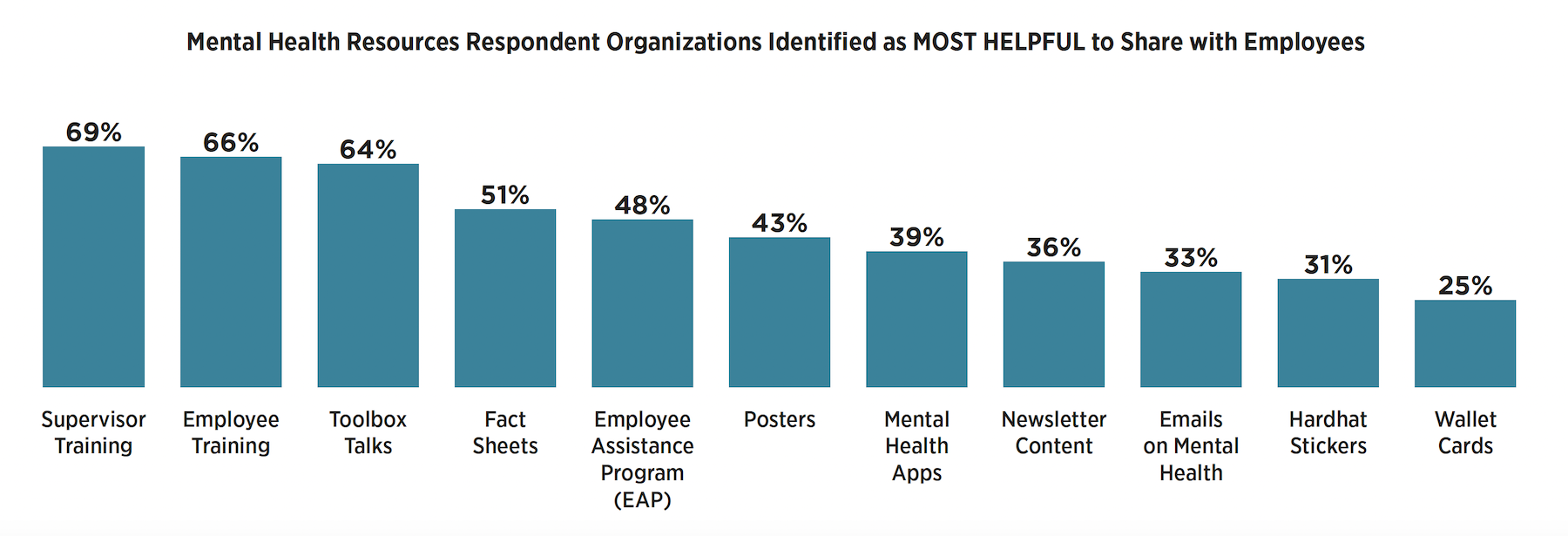
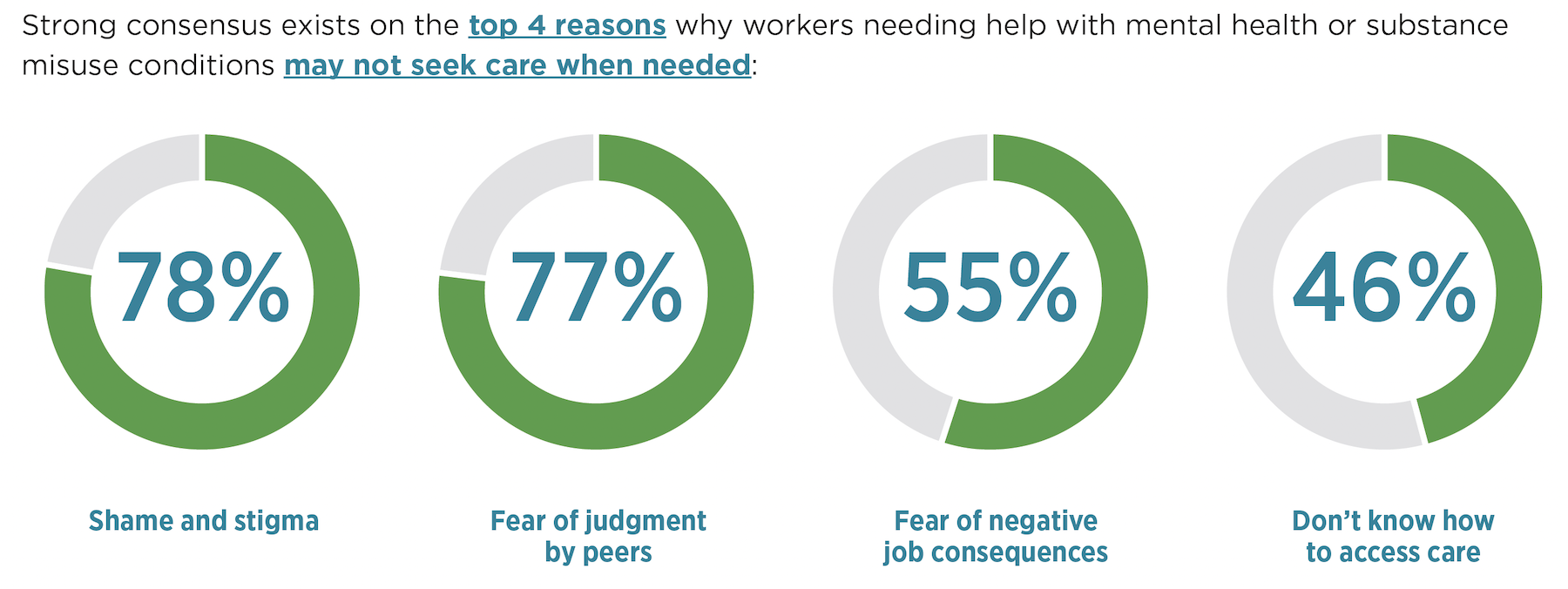
Relieving stress through benefits and design
Ashley Campbell has worked for HITT Contracting for nine years, and mental health has been on that firm’s radar for at least that long. About five years ago, HITT refined its “Culture of Care” to bring together the objectives of safety and wellness in ways that elevate the importance of psychological safety, mental health, and purpose alongside physical wellbeing.
That meant “bringing mental health conversations to the table every time we talked about safety, including jobsite trainings and safety stand downs with our subcontractor partners,” says Campbell, the firm’s Senior Vice President.
HITT offers perks that make work life easier on employees, too, like on-site Department of Motor Vehicle appointments and dental screenings. Its EAP gives HITT’s team access to counseling at no cost, and guidance for challenges in life like estate planning and substance abuse disorder treatment. The company, says Campbell, is constantly assessing its leave policies for family caregiving, parental assistance, and bereavement. In 2020, HITT established a living annual wage of $60,000 for all salaried and nonexempt team members nationwide, regardless of position, “to ensure our people can provide for their families, and [to] reduce financial stress,” she says.
The AE firm CannonDesign has added to its benefits package a concierge service called Accolade that provides its employees with help in dealing with healthcare providers, treatment, billing, and so forth. The firm also covers telehealth services for mental health needs through urgent care, says Charlene Ness Miraglia, CannonDesign’s Principal and Director of Human Resources.
The self-insured CannonDesign is continuously assessing the performance of its insurance plans, and analyzes these data four times a year to guide its planning. Miraglia says that CannonDesign—which does a lot of design work for behavioral healthcare clients—pays attention to how its own offices are designed and operate to reduce worker stress. It also provides opportunities for its remote workers to interface more with at-office employees through programming and mentoring.
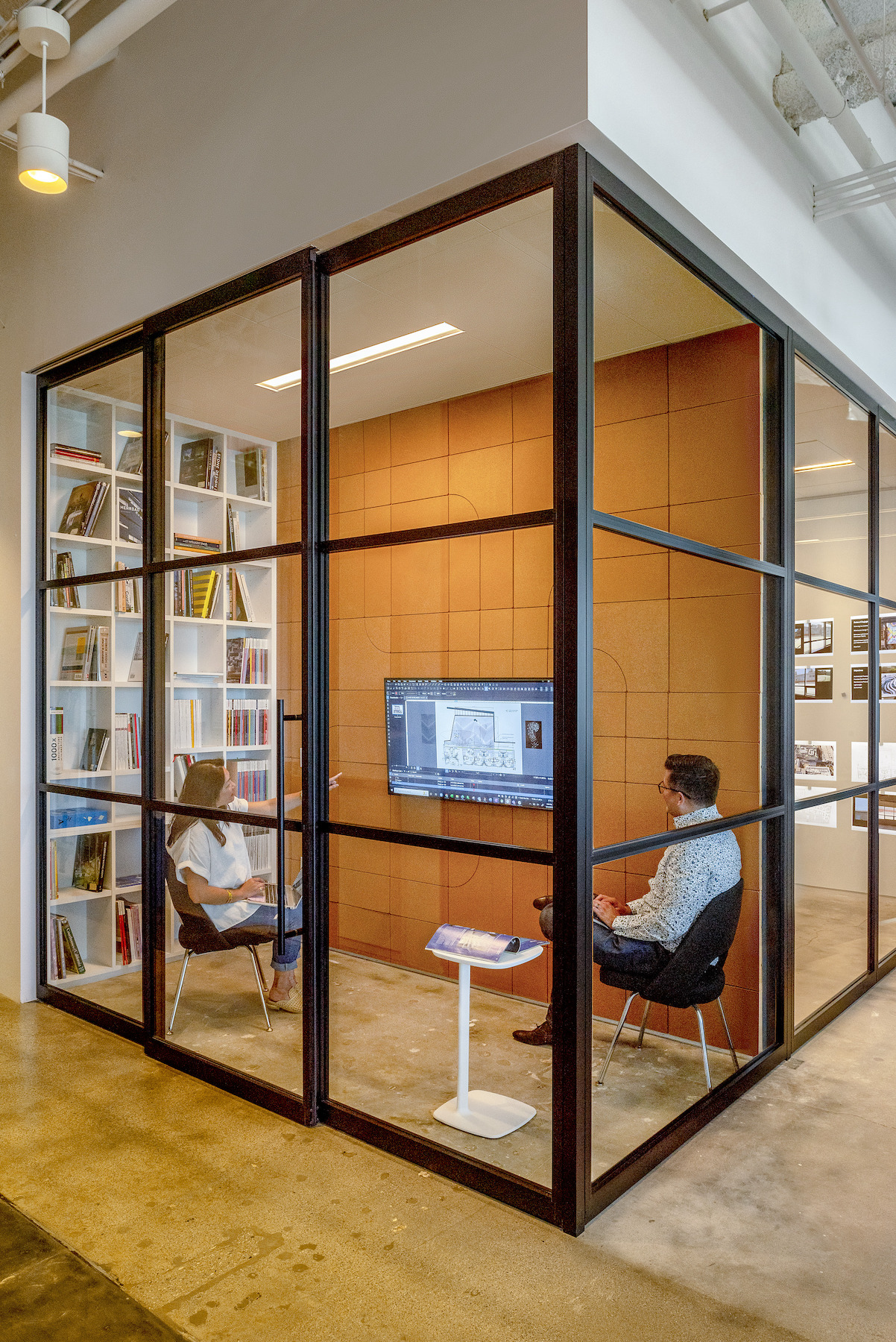
Miraglia says that CannonDesign’s supervisors are trained to have conversations with workers about their mental health. “Communication is always the key,” she says.
HITT’s Campbell thinks the construction industry could be doing more in the mental health arena, such as creating more inclusive environments through “intentional” diversity, equity, and inclusion efforts; investing in wellness programming and healthcare benefits that take more of a holistic approach to whole-person health; and making mental health part of the construction “vernacular” by encouraging leaders and other influencers within companies and in the field “to share their experiences, admit when they are struggling, and have empathy for those who are bold enough to be vulnerable in admitting what they need.”
Related Stories
Apartments | Jan 9, 2024
Apartment developer survey indicates dramatic decrease in starts this year
Over 56 developers, operators, and investors across the country were surveyed in John Burns Research and Consulting's recently-launched Apartment Developer and Investor Survey.
Self-Storage Facilities | Jan 5, 2024
The state of self-storage in early 2024
As the housing market cools down, storage facilities suffer from lower occupancy and falling rates, according to the December 2023 Yardi Matrix National Self Storage Report.
Urban Planning | Dec 18, 2023
The impacts of affordability, remote work, and personal safety on urban life
Data from Gensler's City Pulse Survey shows that although people are satisfied with their city's experience, it may not be enough.
MFPRO+ News | Dec 11, 2023
U.S. poorly prepared to house growing number of older adults
The U.S. is ill-prepared to provide adequate housing for the growing ranks of older people, according to a report from Harvard University’s Joint Center for Housing Studies. Over the next decade, the U.S. population older than 75 will increase by 45%, growing from 17 million to nearly 25 million, with many expected to struggle financially.
Industry Research | Dec 9, 2023
Two new reports provide guidance for choosing healthier building products
The authors, Perkins&Will and the Healthy Building Network, home in on drywall, flooring, and insulation.The authors, Perkins&Will and the Healthy Building Network, home in on drywall, flooring, and insulation.
Student Housing | Dec 5, 2023
October had fastest start ever for student housing preleasing
The student housing market for the upcoming 2024-2025 leasing season has started sooner and faster than ever.
Industry Research | Nov 28, 2023
Migration trends find top 10 states Americans are moving to
In the StorageCafe analysis of the latest migration trends, each U.S. state was looked at to see the moving patterns of people in the last few years. These are the top 10 states that people are moving to.
Market Data | Nov 27, 2023
Number of employees returning to the office varies significantly by city
While the return-to-the-office trend is felt across the country, the percentage of employees moving back to their offices varies significantly according to geography, according to Eptura’s Q3 Workplace Index.
MFPRO+ News | Nov 21, 2023
Renters value amenities that support a mobile, connected lifestyle
Multifamily renters prioritize features and amenities that reflect a mobile, connected lifestyle, according to the National Multifamily Housing Council (NMHC) and Grace Hill 2024 Renter Preferences Survey.
Industry Research | Nov 17, 2023
Air conditioning amenity sees largest growth in Pacific Northwest region
The 2024 Renter Preferences Survey Report sheds light on the demographics, lifestyle, connectivity needs, and more for the renters of today. At the top of this list—the feature that respondents are “interested in” or “won't rent without”—is air conditioning.


